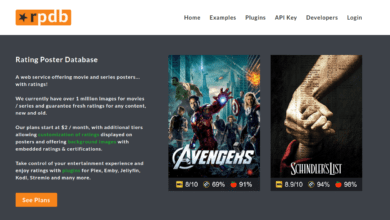Get Ahead with Unite API 10 Best Practices

Introduction
Imagine a world where your applications communicate effortlessly, where data flows seamlessly, and where your development processes are streamlined to perfection. Unite API makes this a reality. It’s the hidden powerhouse that can transform your tech ecosystem, connecting disparate systems with elegance and efficiency. Intrigued? You should be. This isn’t just another tool; it’s a game-changer for developers and businesses alike. Whether you’re looking to enhance functionality, improve user experiences, or simply stay ahead in the digital race, understanding and mastering Unite API is your gateway to innovation. Dive in with us, and discover how this versatile API can revolutionize your projects. Ready to unlock unparalleled potential? Let’s get started.
Table of Contents
Understanding Unite API
What is Unite API?
Unite API is a powerful tool designed to harmonize and streamline the interactions between diverse software applications. It acts as a bridge, facilitating seamless data exchange and functionality integration across different platforms. Imagine an ecosystem where disparate systems communicate effortlessly, enhancing operational efficiency and user experience. That’s the promise of The API. With its robust framework and comprehensive documentation, it simplifies complex integrations, making it an indispensable asset for developers. Whether you’re dealing with real-time data synchronization or automated workflows, The API ensures your applications work in perfect concert, driving innovation and productivity.
Why Choose Unite API for Your Projects?
Opting for The API in your projects is a decision that prioritizes efficiency, scalability, and innovation. This powerful API enables seamless integration across various platforms, reducing development time and effort. With its user-friendly architecture, Unite API caters to both novice and seasoned developers, ensuring a smooth learning curve. Its robust security features, including OAuth and token management, protect your data and maintain integrity. Moreover, the comprehensive documentation and community support empower you to troubleshoot and optimize effectively. Whether you’re aiming to enhance functionality, streamline operations, or boost user satisfaction, Unite API provides the tools and flexibility to meet your goals. Embrace The API and transform your projects into cutting-edge solutions that stand out in a competitive landscape.
Setting Up Unite API
Step-by-Step Guide to Initial Setup
Setting up Unite API for your projects is a straightforward process that can be completed in just a few steps. Here’s a detailed guide to get you started:
- Sign Up: Begin by visiting the The API website and signing up for an account. This step is essential for accessing the platform and obtaining your API key.
- Obtain API Key: Once you’ve registered, navigate to your account dashboard to find your unique API key. This key serves as your authentication token and grants access to the Unite API.
- Install Dependencies: Before integrating The API into your project, ensure you have the necessary libraries and dependencies installed in your development environment. This may include SDKs or language-specific packages.
- Configure API Key: With your API key in hand, configure it within your application code. This typically involves adding the key to your API requests as a header or parameter.
- Test Connection: To verify that your setup is successful, make a test API call using your configured API key. This will ensure that your application can communicate with the Unite API server.
- Explore Documentation: Familiarize yourself with the Unite API documentation, which provides detailed information on endpoints, request parameters, and response formats. This resource will be invaluable as you continue to develop and integrate Unite API into your projects.
Common Pitfalls and How to Avoid Them
While integrating The API into your projects, it’s essential to be aware of common pitfalls that may arise and take proactive measures to mitigate them. Here are some of the most prevalent challenges and strategies to avoid them:
- Improper Authentication: One of the primary pitfalls is improper authentication, where developers fail to securely manage their API keys. To avoid this, ensure that your API keys are stored securely and never hard-coded into your application code.
- Inadequate Error Handling: Another common pitfall is inadequate error handling, leading to unexpected failures and disruptions in service. Implement robust error handling mechanisms in your code to gracefully handle errors returned by the Unite API and provide meaningful feedback to users.
- Lack of Rate Limit Management: Failure to manage rate limits can result in excessive API requests, leading to service degradation or temporary blacklisting. Monitor your API usage closely and implement rate limit management strategies to prevent overloading the Unite API servers.
- Insufficient Documentation: Insufficient or outdated documentation can hinder developers’ understanding of The API endpoints and functionalities. Ensure that the documentation is comprehensive, up-to-date, and easily accessible to facilitate smooth integration and troubleshooting.
- Ignoring Best Practices: Ignoring best practices such as data encryption, versioning, and testing can compromise the security and reliability of your API integration. Adhere to industry standards and best practices to ensure the integrity and performance of your application.
Core Concepts of Unite API
Exploring Key Features
When delving into the realm of The API, one encounters a treasure trove of innovative features designed to elevate integration experiences. From seamless data synchronization to advanced authentication mechanisms, The API offers a plethora of tools to empower developers.
Real-time Data Streaming: Experience the power of real-time data streaming, enabling instantaneous updates and dynamic interactions within your applications.
Automated Task Management: Streamline your workflows with automated task management, allowing you to focus on high-value tasks while Unite API handles the rest.
Customizable Endpoints: Tailor your integration with customizable endpoints, ensuring flexibility and compatibility with your specific use cases.
Robust Security Protocols: Safeguard your data with The API‘s robust security protocols, including OAuth authentication and encryption standards.
Intuitive Documentation: Navigate the integration process seamlessly with intuitive documentation, providing clear guidance and examples for every feature.
Embark on a journey of exploration and discovery as you uncover the myriad possibilities that Unite API has to offer. Whether you’re a seasoned developer or a newcomer to the world of API integration, there’s something for everyone in the rich tapestry of Unite API‘s key features.
Understanding API Calls and Responses
In the intricate dance of software integration, API calls and responses serve as the fundamental steps, orchestrating the flow of data and functionality between applications. When you interact with the Unite API, you initiate API calls, which are requests sent from your application to the API server, specifying the desired action or data. These API calls trigger a series of processes within the API infrastructure, where your request is parsed, validated, and executed.
In response to your API call, the API server generates a response, furnishing you with the requested data or signaling the outcome of the action. This response adheres to predefined formats and status codes, conveying crucial information about the success or failure of your request. Mastery of API calls and responses is pivotal for effective utilization of the API, empowering you to orchestrate seamless interactions and unlock the full potential of your applications.
Best Practices for Authentication
Secure Your API with OAuth
In the ever-evolving landscape of digital security, OAuth emerges as a beacon of protection for your Unite API. By implementing OAuth authentication, you fortify your API endpoints against unauthorized access, ensuring that only authenticated users and applications can interact with your Unite API.
OAuth operates on the principle of granting limited access tokens to authenticated entities, thereby safeguarding sensitive data and resources. These tokens serve as digital keys, unlocking the gates to your Unite API kingdom while keeping unauthorized intruders at bay.
With OAuth in place, you can rest assured that your Unite API is shielded from malicious actors and cyber threats. Embrace the power of OAuth authentication and embark on a journey of secure and seamless integration with the Unite API.
Token Management Tips
Effective token management is paramount when harnessing the power of The API. Here are some expert tips to ensure the security and integrity of your API interactions:
- Regular Rotation: Periodically rotate your API tokens to minimize the risk of unauthorized access. This proactive approach enhances security by rendering old tokens obsolete.
- Secure Storage: Store your API tokens in a secure vault or encrypted database to prevent unauthorized access. Avoid storing tokens in plain text or unsecured locations.
- Use Short-lived Tokens: Opt for short-lived tokens with limited expiration periods to reduce the window of vulnerability. Short-lived tokens enhance security by minimizing the time frame in which they can be exploited.
- Implement Access Controls: Enforce access controls to restrict the usage of API tokens to authorized users and applications only. This ensures that only trusted entities can interact with your API endpoints.
Optimizing Performance

Techniques for Faster API Responses
Enhancing the speed of API responses is crucial for optimizing the performance of your applications powered by Unite API. Employing the right techniques can significantly reduce latency and improve user experience. Here are some effective strategies to achieve faster API responses:
- Optimized Payloads: Trim unnecessary data from API responses to reduce payload size. Utilizing compact data formats like JSON can also expedite data transmission, ensuring swift API responses.
- Caching Mechanisms: Implement caching mechanisms to store frequently accessed data locally. By serving cached responses instead of querying the Unite API repeatedly, you can minimize latency and enhance response times.
- Asynchronous Processing: Embrace asynchronous processing to handle time-consuming tasks concurrently. By executing non-blocking operations, your application can continue functioning smoothly while waiting for API responses from Unite API.
- Content Delivery Networks (CDNs): Leverage CDNs to distribute API responses across geographically dispersed servers. This reduces the distance between users and the Unite API, resulting in faster data retrieval and improved performance.
Handling Rate Limits Effectively
Effectively managing rate limits is crucial for maintaining a smooth and uninterrupted flow of operations with Unite API. Here are some expert tips to ensure you handle rate limits with finesse:
- Monitor Usage: Regularly monitor your API usage to stay within the allotted rate limits. Utilize analytics tools to track API calls and identify any spikes in usage that could lead to rate limiting.
- Implement Backoff Strategies: When you encounter rate limits, implement backoff strategies such as exponential backoff to gracefully handle rate limiting responses from the Unite API servers.
- Prioritize Requests: Prioritize API requests based on their importance and criticality. Allocate resources accordingly to ensure essential operations are not affected by rate limits.
- Optimize Efficiency: Optimize your API usage to minimize the number of requests sent to the Unite API servers. Combine multiple requests into batch requests whenever possible to reduce overhead and conserve rate limits.
Error Handling Strategies
Common Errors and Their Solutions
Encountering errors while utilizing the Unite API is a natural part of the development process, but knowing how to troubleshoot them can save valuable time and effort. Here are some prevalent errors and their corresponding solutions:
- 401 Unauthorized: This error occurs when authentication fails due to invalid or missing credentials. To resolve this, double-check your API keys and ensure they are correctly configured in your requests.
- 404 Not Found: When attempting to access a resource that doesn’t exist, the Unite API returns a 404 error. To rectify this, review the endpoint URL and confirm that it matches the expected format and path.
- 429 Too Many Requests: Exceeding rate limits triggers this error, indicating that your application is making too many requests in a short period. Implement rate limit management techniques, such as backoff strategies, to stagger request retries and avoid overwhelming the Unite API servers.
- 500 Internal Server Error: This generic error signifies an unexpected issue on the Unite API server’s end. Contact the support team for assistance and provide relevant details, such as request payloads or error logs, to aid in diagnosing and resolving the underlying problem.
Building Resilient Applications
In today’s dynamic digital landscape, the ability to construct resilient applications is paramount. With the ever-changing demands and challenges, developers must employ robust strategies to ensure their applications can withstand disruptions and maintain functionality. Here are some key principles to consider when building resilient applications with the Unite API:
- Fault Tolerance: Design your applications to gracefully handle failures and unexpected errors, ensuring they continue to function even in adverse conditions.
- Redundancy: Implement redundancy in critical components of your application architecture to minimize the impact of system failures or outages.
- Scalability: Design your applications to scale horizontally and vertically, allowing them to accommodate fluctuations in traffic and workload seamlessly.
- Monitoring and Alerting: Implement comprehensive monitoring and alerting systems to detect anomalies and performance degradation in real-time, enabling proactive intervention and troubleshooting.
- Automated Recovery: Utilize automation tools and scripts to automate recovery processes and minimize downtime in the event of failures.
Security Best Practices
Protecting Data with Encryption
In the age of data breaches and cyber threats, safeguarding sensitive information is paramount. Encryption serves as a formidable defense mechanism, ensuring that data remains secure, even if intercepted by malicious actors. When integrating the Unite API into your applications, encryption plays a crucial role in protecting data during transmission and storage. By encrypting data with robust algorithms and secure keys, you can thwart unauthorized access and maintain the confidentiality of user information.
Implementing encryption protocols such as SSL/TLS ensures that data exchanged between your application and the Unite API is encrypted, mitigating the risk of interception or tampering. Prioritizing encryption in your API integrations not only safeguards sensitive data but also fosters trust and confidence among your users, reinforcing your commitment to data security and privacy.
Implementing Secure API Gateways
When integrating the Unite API into your applications, implementing secure API gateways is paramount to protect against potential security threats. A secure API gateway acts as a protective barrier between your application and external systems, ensuring that only authorized and authenticated requests are allowed to pass through. By enforcing strict authentication and authorization protocols, secure API gateways prevent unauthorized access to sensitive data and functionalities provided by the Unite API.
Additionally, API gateways often incorporate features such as request throttling, rate limiting, and payload validation to further enhance security and mitigate potential attacks. Prioritizing the implementation of secure API gateways not only safeguards your application and data but also fosters trust among users, assuring them that their information is protected against malicious actors.
Documentation and Versioning
Importance of Comprehensive Documentation
In the realm of software development, the importance of comprehensive documentation cannot be overstated. When integrating the Unite API into your projects, well-documented resources serve as a beacon of guidance, illuminating the path for developers and users alike. Comprehensive documentation provides clear instructions on Unite API endpoints, request parameters, response formats, and authentication mechanisms, empowering developers to leverage the full potential of the API with confidence and ease.
Furthermore, thorough documentation fosters collaboration and knowledge sharing within development teams, streamlining the integration process and accelerating project timelines. Beyond the development phase, comprehensive documentation also serves as a valuable resource for troubleshooting, enabling developers to quickly identify and resolve issues that may arise during API integration. By prioritizing the creation of comprehensive documentation, you lay a solid foundation for successful Unite API integration and ensure a seamless experience for all stakeholders involved.
Managing API Versions Without Disruption
In the ever-evolving landscape of software development, managing API versions without disruption is essential to ensure seamless transitions and uninterrupted functionality. With the Unite API, adopting a robust versioning strategy is paramount to accommodate changes and enhancements while minimizing the impact on existing integrations. Utilizing techniques such as semantic versioning and backward compatibility, developers can introduce new features and updates without breaking existing API consumers.
Providing clear and concise documentation on versioning policies and changes empowers developers to adapt their integrations accordingly. By fostering a culture of transparency and collaboration, API providers can effectively manage API versions while ensuring a smooth and frictionless experience for users of the Unite API. With careful planning and diligent execution, managing API versions becomes a seamless and harmonious process, driving innovation and progress in the digital ecosystem.
Testing and Debugging
Automated Testing Tools and Techniques
In the realm of software development, leveraging automated testing tools and techniques is instrumental in ensuring the reliability and stability of Unite API integrations. These tools streamline the testing process by automating repetitive tasks, such as sending requests and validating responses, thereby saving time and reducing human error. Popular automated testing tools for Unite API include Postman, Newman, and Rest-Assured, each offering unique features and capabilities to suit various testing scenarios.
Techniques such as continuous integration and continuous deployment further enhance the efficiency of testing workflows by integrating testing into the development pipeline. By incorporating automated testing tools and techniques into their workflow, developers can confidently deploy updates and new features to the Unite API with minimal risk of introducing regressions or breaking existing functionality.
Debugging Tips for Efficient Troubleshooting
When encountering issues with the Unite API, employing effective debugging tips can expedite the troubleshooting process and minimize downtime. Firstly, logging is key; utilize comprehensive logging mechanisms to track the flow of data and identify potential points of failure within your API interactions. Secondly, leverage error handling techniques to gracefully manage unexpected scenarios and provide informative feedback to users. Additionally, unit testing and integration testing can uncover hidden bugs and ensure the robustness of your Unite API integrations.
Collaborating with peers and seeking assistance from online communities can also offer fresh perspectives and innovative solutions to challenging debugging scenarios. By adopting these debugging tips, developers can streamline the troubleshooting process and maintain the reliability and performance of their Unite API integrations.
Real-World Use Cases
Success Stories Using Unite API
Discover how businesses are leveraging the power of Unite API to unlock new opportunities and drive innovation. From streamlined workflows to enhanced customer experiences, these success stories showcase the transformative impact of Unite API integration.
- E-commerce Integration: A leading e-commerce platform utilized Unite API to seamlessly integrate third-party payment gateways, resulting in faster transactions and increased customer satisfaction.
- Real-time Analytics: A data-driven company leveraged Unite API to access real-time analytics, enabling them to make informed decisions and gain a competitive edge in their industry.
- Cross-platform Connectivity: A mobile app developer utilized Unite API to connect their app with various social media platforms, facilitating seamless sharing and interaction for users.
- Supply Chain Optimization: A logistics company integrated Unite API into their supply chain management system, streamlining operations and reducing costs through automated processes.
Lessons Learned from Industry Leaders
Drawing insights from industry leaders who have successfully integrated the Unite API can provide invaluable guidance for aspiring developers and businesses. These leaders have navigated the complexities of API integration and emerged with valuable lessons that can shape the strategies of others. One key lesson is the importance of thorough planning and research before embarking on an API integration journey. Understanding the unique needs and requirements of your project can ensure a smoother and more successful integration process.
Communication and collaboration with stakeholders and team members are crucial for aligning goals and expectations throughout the integration process. Embracing a mindset of continuous learning and adaptation allows industry leaders to stay ahead of the curve and leverage the full potential of the Unite API to drive innovation and growth in their respective fields.
Conclusion
Recap of Key Takeaways
As we conclude our exploration of the Unite API, let’s recap the key takeaways from our journey. Firstly, integration with the Unite API offers a gateway to enhanced functionality and connectivity, enabling businesses to streamline operations and drive innovation. Secondly, prioritizing security and documentation is essential to ensure the integrity and reliability of API interactions. Thirdly, embracing best practices such as rate limit management and error handling fosters a seamless user experience and mitigates potential disruptions.
Leveraging automated testing tools and techniques facilitates efficient troubleshooting and quality assurance. Lastly, learning from industry leaders and success stories demonstrates the transformative impact of Unite API integration and inspires future endeavors. By incorporating these insights into your API integration strategy, you can unlock the full potential of the Unite API and propel your projects to new heights of success.
Next Steps to Master Unite API
Congratulations on taking the first steps toward mastering the Unite API! Now that you’ve familiarized yourself with the basics, it’s time to delve deeper into its intricacies.
- Exploration: Dive into the Unite API documentation to uncover hidden gems and advanced features that can elevate your projects to new heights.
- Experimentation: Don’t hesitate to experiment with different API endpoints and parameters to gain hands-on experience and discover creative solutions to your challenges.
- Community Engagement: Join online Unite API communities and forums to connect with fellow developers, share insights, and seek guidance on complex issues.
- Continuous Learning: Stay updated on the latest developments and updates in the Unite API ecosystem through blogs, webinars, and tutorials to stay ahead of the curve.
- Real-world Applications: Apply your newfound knowledge to real-world projects and challenges, refining your skills and cementing your expertise in Unite API integration.
FAQs about Unite API
What is Unite API?
- Unite API is a powerful tool that allows developers to integrate various functionalities into their applications, enhancing connectivity and functionality.
How can I integrate Unite API into my project?
- Integrating Unite API into your project is straightforward. Simply sign up for an API key, read the documentation, and start making requests to access the desired features.
What are the key features of Unite API?
- Unite API offers a wide range of features, including but not limited to payment processing, data analytics, social media integration, and more.
Is Unite API secure?
- Yes, Unite API prioritizes security and employs industry-standard encryption and authentication mechanisms to ensure the safety of user data and transactions.
Can I customize Unite API to suit my specific needs?
- Absolutely! Unite API offers customization options, allowing developers to tailor the API integration to their unique requirements and preferences.
How can I troubleshoot issues with Unite API integration?
- If you encounter any issues with Unite API integration, refer to the documentation for troubleshooting tips, or reach out to the support team for assistance.
What are some best practices for optimizing Unite API performance?
- To optimize Unite API performance, consider techniques such as caching, minimizing unnecessary requests, and implementing efficient error handling strategies.


Can you be more specific about the content of your article? After reading it, I still have some doubts. Hope you can help me.